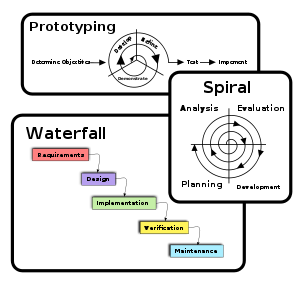The Siren Song of Perfection
by Holland-Mark | January 26, 2010

- Image via Wikipedia
We’re getting close to the finish line on a handful of client projects right now, and I’ve observed that one of the biggest challenges “real marketers” have in embracing social systems is, for lack of a better term, cultural.
It’s almost a cliche now to say that embracing social media means giving up the sense of control marketing communications types are used to in other media. Like most cliches, there’s a kernel of truth in that observation, but it’s only part of the leap we ask our clients to take.
The less obvious but in some respects equally daunting leap has to do with embracing the ethos of successful software development, which differs quite dramatically from the ethos of successful print and broadcast development.
Marketers are shaped by the awareness that a typo in a print ad is pretty much grounds for termination. A brand manager will spend hundreds of thousands on a TV spot to get it exactly perfect before spending millions to distribute it over the air.
But that’s not the way you build software. It used to be, when software lived on mainframes, or whatever. The “waterfall” methodology was a lot like the ad creation methodology, a system oriented to deep and thorough planning before a launch where perfection was always aspired to, and sometimes required.
The problem with this approach as applied to business software was that it took too damn long, to the point that by the time the system launched, the business issues it was intended to address had evolved. To be more responsive, software development methodology evolved toward the sprint or “scrum” methodology, which is all about iteration, and the perpetual beta was born.
Entrepreneurs and social folk have an almost religious conviction about the design-ship-evolve model of creating software. But it’s an unnatural act for marketing folk, with the effect that building social software in marketing applications puts stress on the relationship between provider and client.
Have you seen this? Do you agree with the diagnosis? And either way… what strategies have worked for you in mitigating it?
Related articles by Zemanta
- Jump in the Water’s Fine: Implementing Agile (devx.com)
- Agile Development with Projects 2.0 (blogs.zoho.com)
- Small Business Marketing Strategy (untreatableonline.com)

![Reblog this post [with Zemanta]](http://img.zemanta.com/reblog_e.png?x-id=ef1a38b5-f40a-4393-a53d-1198983bedef)